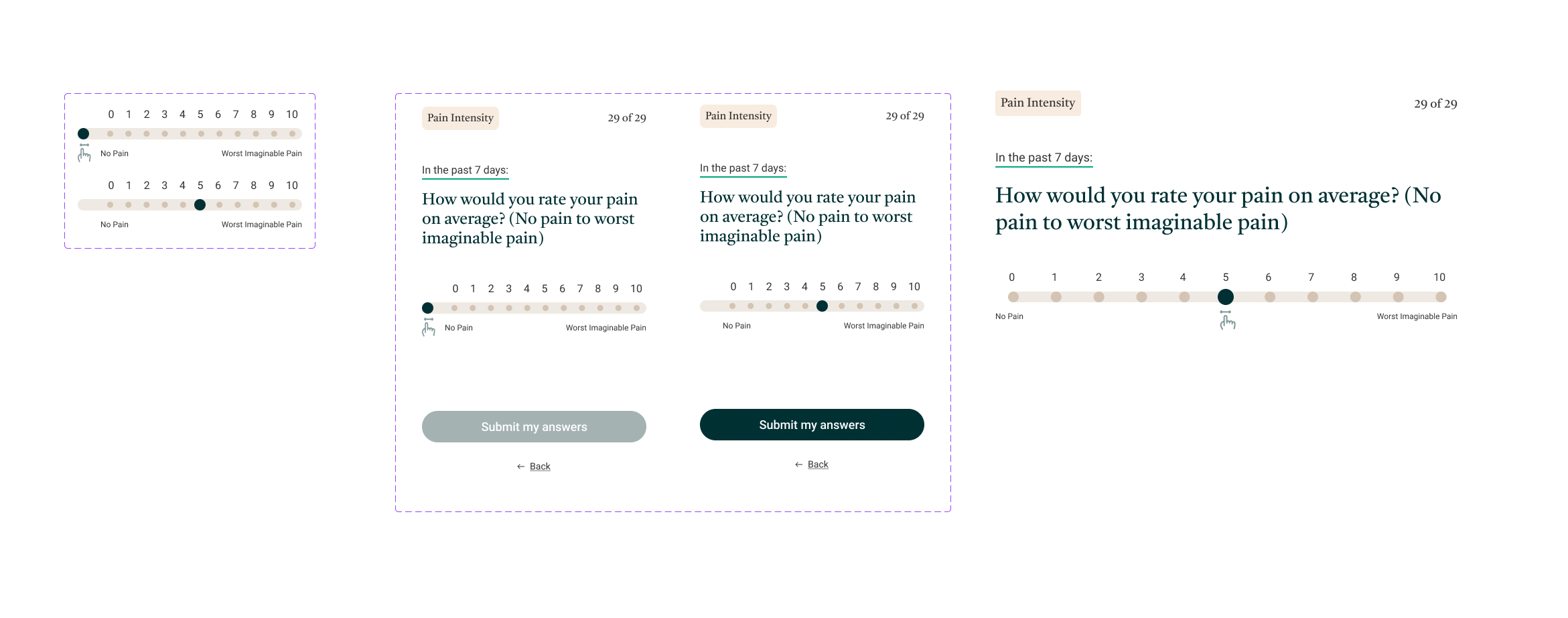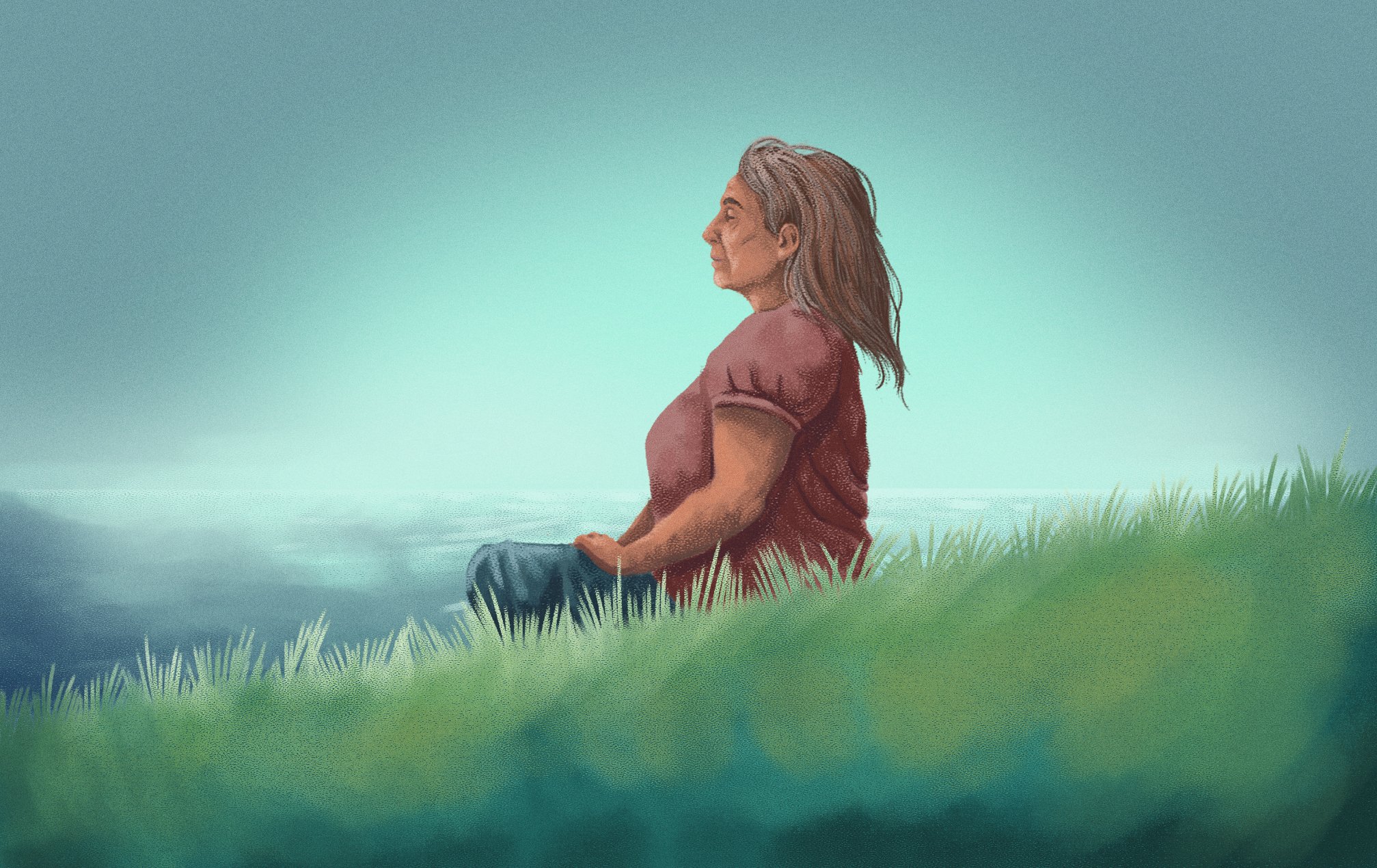Human-centered innovation for measurable health impact.
My work blends human-centered design with data and AI to transform how patients and clinicians connect. I lead teams to build experiences that not only improve outcomes but also restore trust, accessibility, and compassion in digital health.

Building products for patients, with patients.
Breaking down stigma and shame, one product at a time.
Patient Advisory Council – Opioid Use Disorder
Designing impactful experiences requires empathy, insight, and intention.
I create outcomes by meeting people where they are.

HUMAN CENTERED CARE
AI that listens.
Experts who care.
Fern Health bridges the gap between intelligence and empathy. Our conversational AI, trained alongside clinical experts, offers real-time support while empowering health coaches to deliver deeply personalized care.
This partnership between human and AI creates an adaptive ecosystem that transforms pain management from reactive treatment into proactive, continuous healing.
Role: As Product and Design Lead, I defined the product vision and strategy that aligned clinical, AI, and business goals, driving measurable increases in daily engagement, improved outcomes, and scalable impact.
An overview of Fern, a personalized and dynamic platform to reduce pain interference and improve their overall quality of life.
Human coach messaging and scheduling user journey
DESIGNING THE HUMAN CONNECTION
Designing a More Inclusive Future of Pain Care
A thoughtful redesign grounded in inclusivity and behavioral design, destigmatizing chronic pain through subtle visual cues, language, and flow that subconsciously engage, motivate, and make care more accessible for everyone.
Role: Create a new design system and language that align with the strategic product vision and increase clinical outcomes.
VR FOR CHRONIC PAIN
Rewiring the fear of movement through immersive VR therapy
Mind & Motion is an evidence-based virtual reality intervention designed to help people overcome kinesiophobia—the fear of movement often associated with chronic pain. By combining neuroscience, graded exercise, and mindfulness, the experience retrains both the mind and body to move with confidence again.
MOA’s:
Graded exercise: Targeted and personalized movement sequences rebuild trust in the body.
Pain neuroscience education: Delivers cognitive reframing to reduce fear and catastrophizing.
Immersive mindfulness: Creates safety through grounding and breath-based practices that promote calm and control.
My role:
• Establish UXR process and testing in clinics
• Led motion and in-app experience design & feedback loops
• Drove brand design and marketing videos
Watch unscripted feedback of the first use experience of VR for Chronic Pain. Its primary goal is to equip members with a detailed understanding of pain – thereby alleviating their apprehension and anxiety related to it.

Design System built for Chronic Pain

















PATIENT ADVISORY COUNCILS
Amplifying patient voices to design more inclusive, compassionate care.
I build patient advisory councils from all over the nation that uncover hidden biases and bring lived experience into the heart of product design. These partnerships don’t just inform — they transform — creating more inclusive, empathetic, and effective healthcare solutions. When patients are co-designers, innovation becomes personal, authentic, and deeply impactful.
My guiding principle:
Don’t just design for patients — design with them.
A trailer video of our Addiction Patient Advisors coming together to film stories of addiction for the reSET/O product. Role: Project Lead and Director
The Patient Advisory Council for the lived experience of OUD and SUD
PRESCRIPTION DIGITAL THERAPEUTIC FOR ADDICTION
Patient onboarding & retention through storytelling
Patients often face barriers to understanding new therapies, leading to low prescription fulfillment and missed opportunities for better health. By tackling these challenges head-on, I led the team to develop a modular onboarding experience designed to educate patients about their therapy's value, reduce reliance on providers for onboarding, and increase prescription fulfillment rates across diverse disease states.
Role: Led a team of product managers, UX researchers, clinicians, designers, patients, and videographers.
CHRONIC INSOMNIA
Somyrst: Prescription DTx delivering CBT-I
Led research and design for the Somryst™ HCP Dashboard, turning a standalone FDA-authorized PDT into a clinician-trusted tool with clear progress, validated scores, and fast insight in real care.
PROCESS & PRINCIPLES
Building thoughtful teams, processes, and products.
My applied framework for leading multidisciplinary teams blends design thinking, behavioral science, and data-driven strategy to deliver business outcomes, drive engagement, and create meaningful change across 15+ disease areas and mental health conditions.
Conditions include:
Opioid and Alcohol Use Disorder, Substance Use Disorder, Multiple Sclerosis, Schizophrenia, Insomnia, Major Depressive Disorder, Bipolar, Autism, IBS, Chronic Pain, Kinesiophobia, Severe Social Anxiety Disorder, Agoraphobia, and Generalized Anxiety & Depression.
Human-centered
Leveraging behavioral science, game mechanics, and motivational design to foster engagement and mastery for both patients and providers. Every experience begins with empathy, evolves through experimentation, and ends in measurable impact.
Co-design
Establishing Patient Advisory Councils to uncover biases, increase confidence, and improve outcomes through lived experience. Partnering with underserved communities and healthcare providers to bridge systemic gaps and ensure solutions align seamlessly with real-world workflows.
Design strategy
Connecting brand principles, content voice, and service design to craft holistic experiences for patients, clinicians, and caregivers. Each interaction is built with intention, balancing emotional resonance, clarity, and clinical rigor.
Leadership
Leading through influence, not authority—cultivating trust, transparency, and psychological safety so teams can take creative risks. I help leaders and cross-functional peers align around shared purpose, mission-critical priorities, and measurable results.
UX Experimentation
Driving innovation through structured experimentation and evidence-based design. I guide teams to test hypotheses, challenge assumptions, and evolve solutions through rapid, insight-driven iteration. Using a blend of behavioral research, journey mapping, and feedback loops, we translate uncertainty into learning—and learning into measurable impact.
Data-driven
Integrating qualitative insights from UX and clinical research with quantitative engagement and market data. This evidence-led approach ensures that every design decision is strategic, ethical, and rooted in both empathy and evidence.

Fueled by emotional intelligence and a relentless growth mindset, I’m known for transforming teams into boundary-pushing, patient-centered innovators, cultivating a culture of unity, experimentation, and empathy that drives meaningful impact.
Media & News
Podcast — Getting2Alpha
Designing Digital Therapeutics
It was an honor to be hosted by Amy Jo Kim, a thought leader and personal role model in product innovation. Listen to how I am driving AI and VR innovation in Chronic Pain Management at Realized Care.
News — MedCity
Harnessing Personal Experience with Trauma to Drive Empathetic, Innovative Healthcare Solutions
Having experienced a traumatic brain injury, I understand the profound toll it takes on every aspect of life. This personal journey shapes my approach to healthcare, driving me to design compassionate, patient-centered solutions for trauma, chronic pain, and mental health.
Conference Panel —
Collaboration in Healthtech
What is a typical day like in the life of a digital therapeutics product leader? How does one think about product strategy, and measure success? This panel shares three perspectives on building effective products in DTx and what collaboration looks like between design and clinical leaders.








